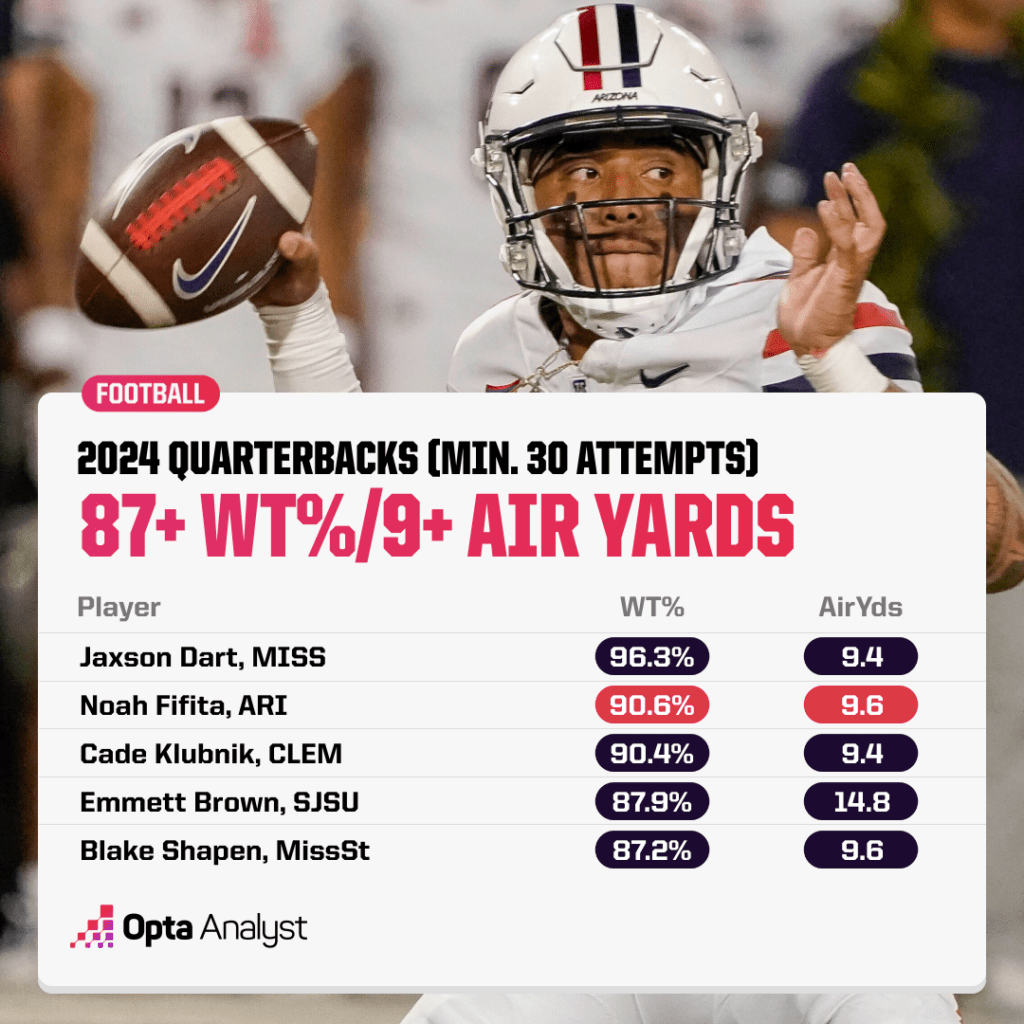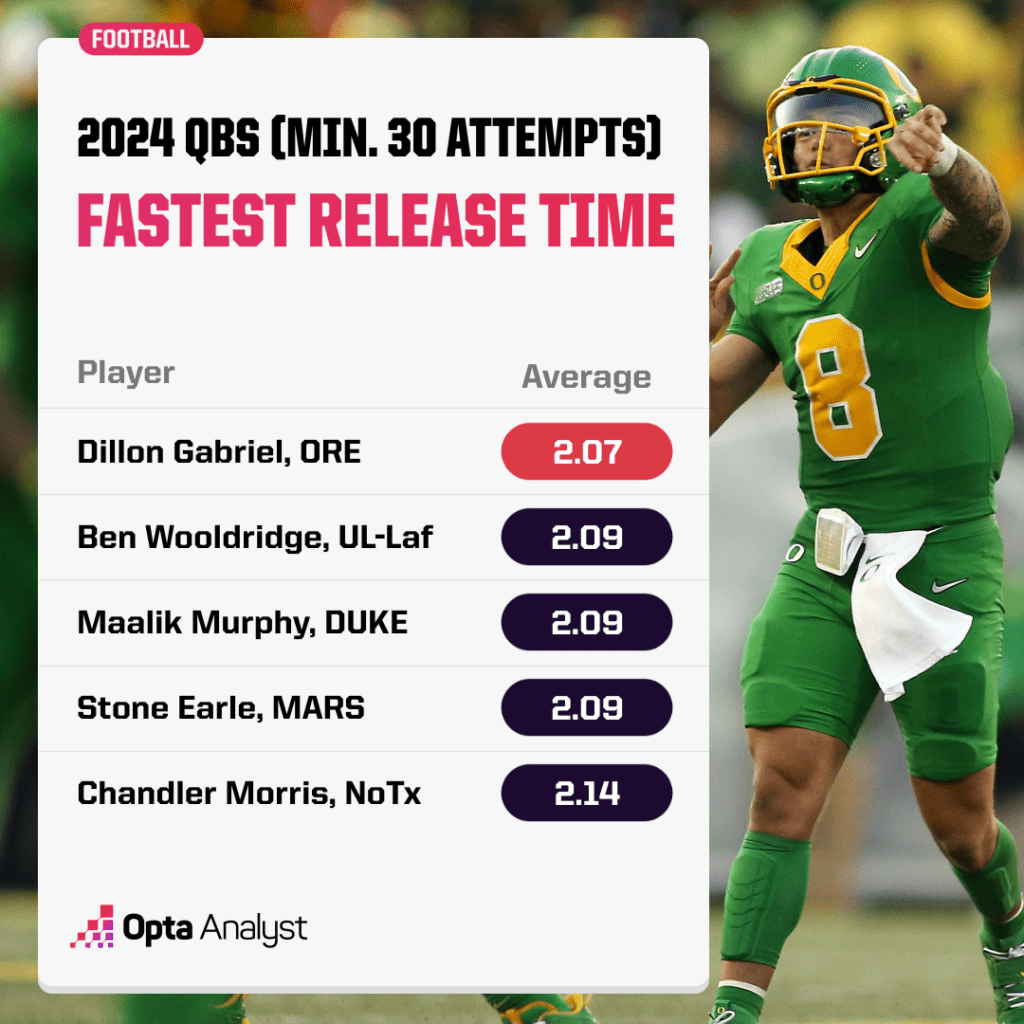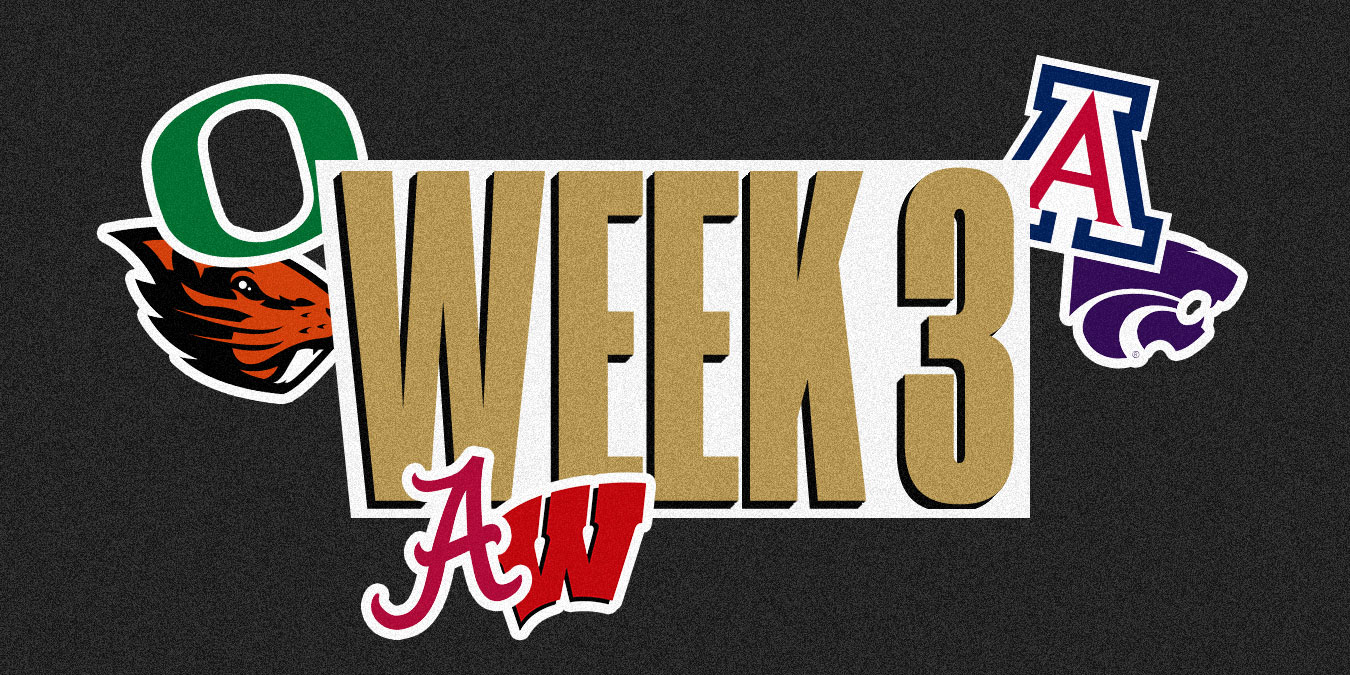It’s a light slate in Week 3 of the 2024 college football season.
Just how light? Well, ESPN’s College GameDay set is camping out a game between LSU (which is still 0-1 against FBS teams) and South Carolina (which has a narrow win against the Sun Belt’s Old Dominion and a blowout of what seems to be a lousy Kentucky).
There’s no premium game on the schedule between likely College Football Playoff contenders. But in my experience, these light-on-paper weeks often turn out to be some of the most fun weeks of the season.
The college football Week 3 schedule is heavy on rivalries, including rivalries that aren’t usually contested this early in the season. It’s got geographical crossover events that don’t happen often. And it’s got good games on both Thursday and Friday night.
Opta Analyst’s TRACR model has its own view of these games. TRACR (Team Rating Adjusted for Conference and Roster) is a net efficiency stat. Its job is to measure how well a team performs against a standardized level of competition across all of college football.
The model is based on an EPA (expected points added) calculation weighed by opponent strength. A team with a TRACR of 0.0 is considered an average team in the FBS. If a team with a 4.5 TRACR has a matchup with a minus-2.0 TRACR team at a neutral site, the better team would be a 6.5-point favorite, according to the model.
Let’s see what it says about who are the best bets in NCAA football Week 3.
No. 32 (TRACR) Arizona at No. 20 Kansas State, 8 p.m. ET Friday, FOX
Though this matchup is considered a nonconference game, Arizona looks like a fringe contender for the conference title and Kansas State is a favorite atop the new 16-team Big 12 along with Utah.
Friday brings a stylistic clash: Arizona’s downfield passing firework show with quarterback Noah Fifita and wideout Tetairoa McMillan against Kansas State’s punishing gap running attack. It’s also a battle of Wildcats, as two of the four FBS teams with that mascot now inhabit the same conference.
For Arizona, the key is simple: Don’t get overpowered in the trenches. The K-State offense prefers to play big, lining up in three-wideout formations just 48.6% of the time. (The national average is about 69%.)
K-State likes to bully opposing linemen and linebackers with pulling guards, tackles, and H-backs, and the program has been successful at it for years. In two games this year, one of them against a playoff-contending AAC team in Tulane, K-State tailback DJ Giddens is averaging 7.4 yards per carry – with 5.7 of those coming before contact. Quarterback Avery Johnson is also a run threat, averaging 7.6 yards per scramble and 6.0 yards per designed run.
The good news is that Arizona is likely to score some points thanks to the Fifita-McMillan combination. McMillan’s 10-catch, 304-yard, four-touchdown performance in Week 1 against New Mexico was one of the all-time great college receiving games. His 304 yards were the 13th-highest single-game total of the past 20 years, and it was only somewhat of an outlier for an elite tandem.
Fifita’s 90.6% well-thrown rate is third among FBS passers with at least 30 attempts through two weeks, and he’s one of only three QBs who have a 90+ well-thrown percentage while averaging more than 9.0 air yards per attempt.

McMillan is second in receiving yards despite having just a 55.6% burn rate against the defensive backs covering him. That’s well off the 63.8% national average for wide receivers and McMillan’s 65.1% burn rate last year.
Translation: McMillan has been one of America’s most productive receivers despite not shaking DBs at his usual level yet.
TRACR’S Win Probability: Kansas State 57.7%
No. 2 Alabama at No. 63 Wisconsin, 12 p.m. ET Saturday, FOX
Is Wisconsin any good? It’s not at all clear.
The Badgers played a MAC team (Western Michigan) and an FCS team (South Dakota) in their first two games and won each by 14 points, underperforming expectations. The Badgers are scuffling to find explosive plays on offense, ranking 102nd in downs with 10-plus yards to go and 113th with 20 yards to go.
Quarterback Tyler Van Dyke has a solid 86.1% well-thrown rate but averages just 6.9 air yards on his throws – the third-lowest rate so far of any Big Ten quarterback. The Wisconsin defense has played fine, letting up 27 points across two games. But there’s relatively little to evaluate from WMU and South Dakota that applies against an Alabama team with national championship hopes.
Explosive plays are not a problem for Alabama, which has had 13 plays of 20-plus yards in its first two games. Receiver Ryan Williams, a five-star true freshman who won’t be 18 until after the season, has three catches of 30+ yards in his first two college games.
The Alabama offense was sluggish for three quarters against USF, but then it busted out with 28 in the fourth quarter. You might be able to contain Alabama for a while, but doing it across four quarters figures is hard. Very, very hard.
Keeping Alabama’s offense on the sidelines would be a start. With Wisconsin’s quick-strike passing game not looking like much, the Badgers would be well served to establish the consistent run game that used to be their trademark. (The program hasn’t ranked higher than 35th in yards per rush since 2019.)
Starting back Chez Mellusi could only scratch out 3.8 yards per run against WMU and South Dakota, and just 3.1 before contact – both below the average for Big Ten running backs.
Can the Badgers get him going against a defensive front with infinitely more talent?
TRACR’S Win Probability: Alabama 92.4%
No. 24 Oregon at No. 30 Oregon State, 3:30 p.m. ET Saturday, FOX
It’s better than nothing. Oregon and Oregon State have maintained their 130-year-old rivalry now that the Ducks have left the Pac-12 for the Big Ten.
The game isn’t on Thanksgiving weekend anymore, and it feels bizarrely early to contest a game that’s part of the late-season tapestry. The last year with a Ducks-Beavers game played before November was 1945, when the world had a few things going on. Still, this should be fun, and Corvallis will be wildly hopped up for a game that was always the program’s biggest of the year but now feels even bigger after the Ducks stranded the Beavs in realignment.
Oregon has been sluggish in its first two games, wins over Idaho and Boise State. The Ducks have taken ill-timed penalties, committed turnovers, and been sloppier around the edges than we’ve come to expect from them.
Dan Lanning’s team should sharpen up as the year goes on, but there are still reasonable questions to ask about how the Ducks and new quarterback Dillon Gabriel fit each other. At Oklahoma, Gabriel was a bit of an improviser, holding the ball for a while and taking downfield shots. At Oregon, the Ducks have used him like they used Heisman finalist Bo Nix last year.
Gabriel has just a 2.07 average release time, which is the fastest in the nation among FBS QBs with at least 30 attempts. However, he’s averaged just 5.8 air yards and posted an 11.4% checkdown rate – one of the nation’s highest. We’ll see if offensive coordinator Will Stein turns Gabriel loose against the Beavers in a way he hasn’t yet.

Oregon State, for all intents and purposes, is a brand-new operation. The Beavers lost nearly all of their contributors from last year’s team, not the least of all their head coach, Jonathan Smith, who departed for Michigan State.
We know only a bit about them from games against Idaho State and San Diego State. Two encouraging points have stuck out, though. First is that the defense was tight all around in shutting out SDSU (coached by a well-regarded offensive mind in Sean Lewis) on the road last week.
Second is running back Jam Griffin, a 5-foot-9 back who joined the program as a transfer in 2022, left for Ole Miss last year but returned this year and now leads the offense. Griffin has averaged 6.6 yards per carry so far and scratched out 2.4 after contact – above the national average despite his small stature.
OSU’s offensive chances in this game rest on getting Griffin going against a big, athletic Oregon front. Perhaps the Beavers got some encouragement from watching Boise State’s Ashton Jeanty go for 192 yards and three touchdowns against Oregon on Saturday.
Maybe a smaller tailback is the key.
TRACR’S Win Probability: Oregon 55.0%
The Rest of TRACR’s College Football Picks for Week 3
- No. 1 (TRACR) Georgia 92.5% over No. 51 Kentucky
- No. 3 Texas 94.9% over No. 80 UTSA
- No. 5 Ole Miss 95.1% over No. 90 Wake Forest
- No. 6 Tennessee 99.2% over No. 133 Kent State
- No. 7 Miami (FL) 97.5% over No. 128 Ball State
- No. 11 Missouri 66.2% over No. 26 Boston College
- No. 12 Texas A&M 75.6% over No. 43 Florida
- No. 14 UCF 67.7% over No. 36 TCU
- No. 15 Kansas 80.0% over No. 68 UNLV (Friday night)
- No. 16 Auburn 97.5% over No. 132 New Mexico
- No. 17 LSU 64.9% over No. 39 South Carolina
- No. 18 Oklahoma 66.3% over No. 50 Tulane
- No. 19 Michigan 90.3% over No. 107 Arkansas State
- No. 21 Notre Dame 73.9% over No. 60 Purdue
- No. 22 Washington 57.4% over No. 33 Washington State
- No. 23 Maryland 78.6% over No. 75 Virginia
- No. 25 Arkansas 84.4% over No. 94 UAB
AP Top 25 teams not ranked in the TRACR top 25: No. 13 Oklahoma State (at Tulsa), No. 12 Utah (at Utah State), No. 23 Nebraska (vs. Northern Iowa), No. 25 Northern Illinois (idle), No. 3 Ohio State (idle), No. 8 Penn State (idle), No. 11 USC (idle), No. 19 Louisville (idle), No. 21 Iowa State (idle), No. 22 Clemson (idle)
Be sure to check out our MLB, NBA, NFL and CFB coverage. And follow us on X and Instagram for more!
